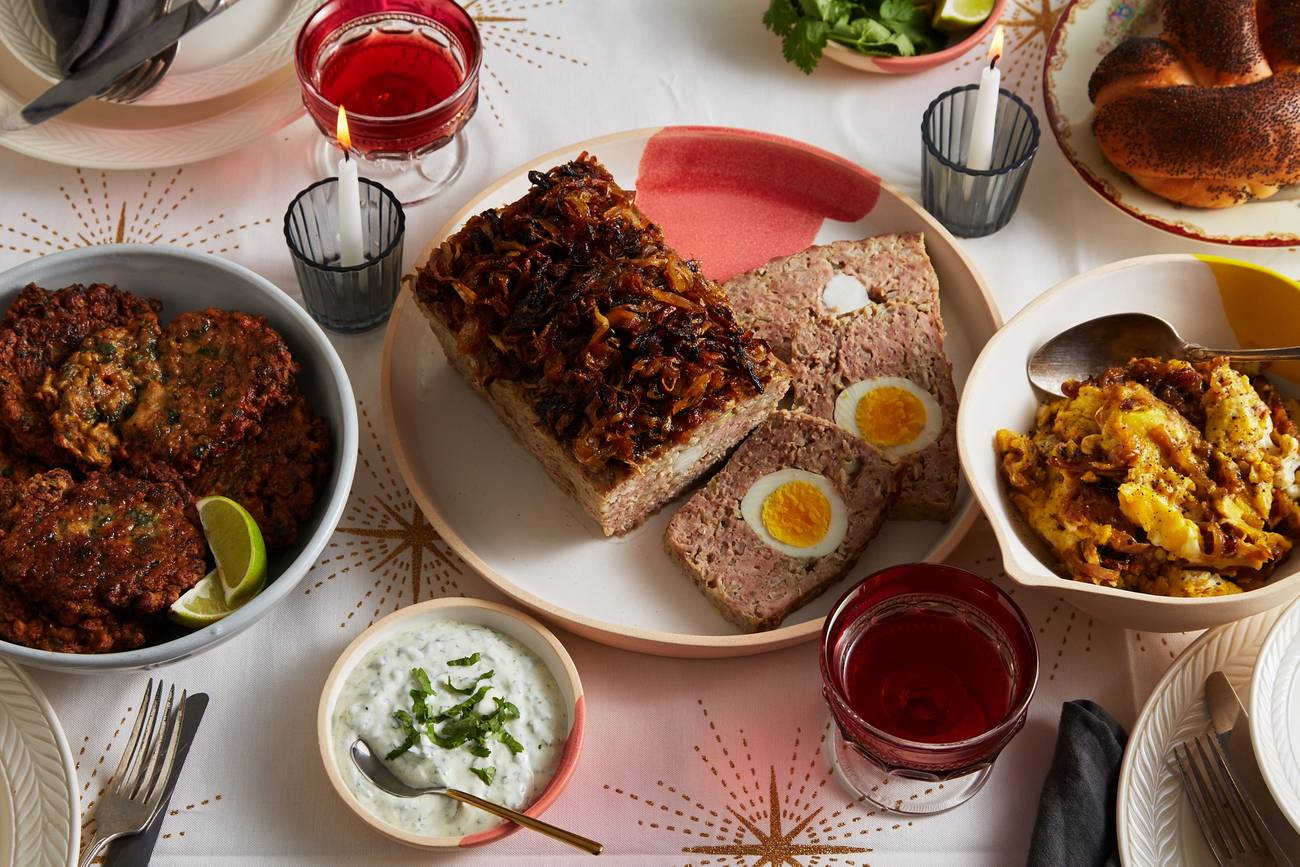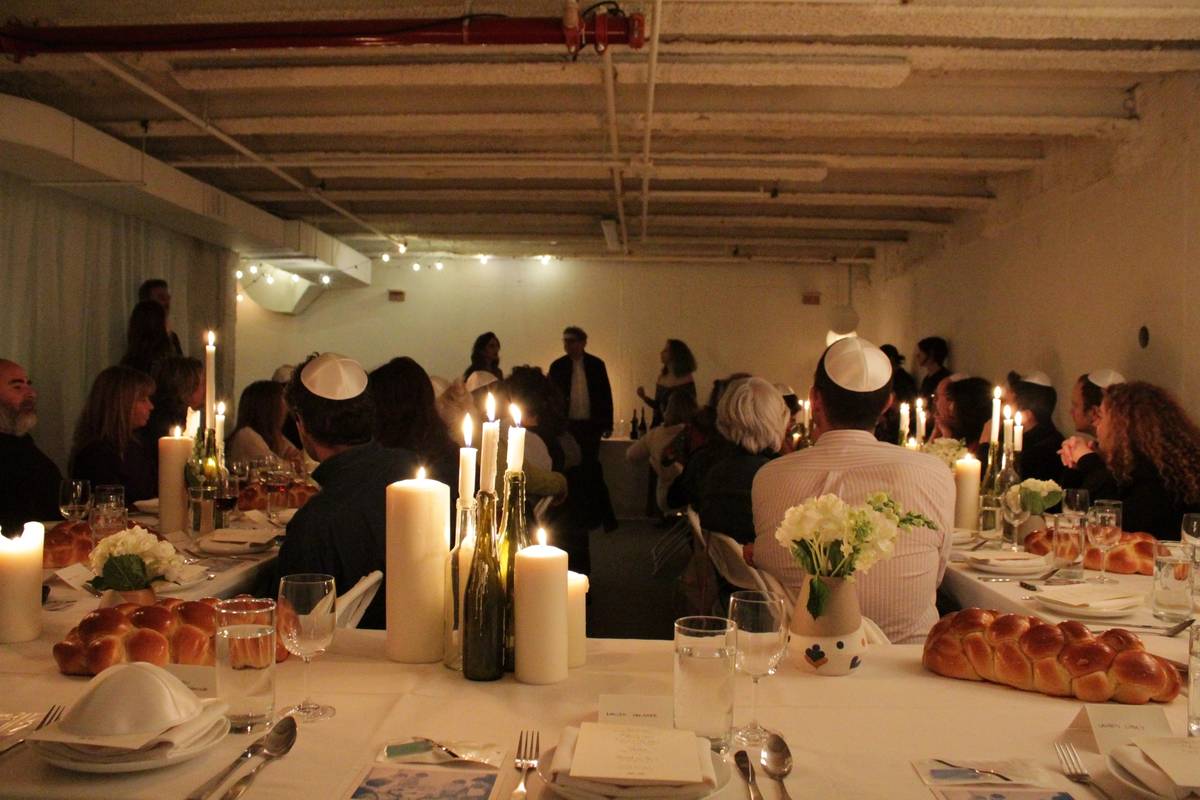Preserving Our Heritage, One Recipe at a Time
The Jewish Food Society delves into the people and the stories behind the dishes it hopes to pass down to a new generation



In 2005, Naama Shefi had a meal that changed her life. She and her soon-to-be husband were visiting his grandmother in her apartment in Israel. When they arrived on Friday afternoon, they found her in the tiny kitchen prepping an outsize feast for Shabbat dinner. Shefi remembers stuffed tomatoes and onions, bourekita pastries, Swiss chard pie, and more than a dozen mezze-friendly spreads and salads. “She used the stems of the Swiss chard to make another salad, just because she didn’t want to throw them away,” Shefi told me.
Sitting around the table that night, Shefi—who grew up on a kibbutz sharing uninspiring meals in the communal dining hall, but was always drawn to the diverse flavors found beyond the kibbutz gate—realized that the dishes she was eating were more than simply delicious. They were also endangered. Like most Old World-minded home cooks, her husband’s grandmother did not rely on recipes. So when she passed away, those dishes—and generations’ worth of her family’s Turkish-Greek food knowledge—would be lost.
That meal planted a seed in Shefi that would eventually grow into the Jewish Food Society, an organization focused on preserving and revitalizing Jewish culinary heritage. Since 2017, Shefi and her collaborators have sought out the recipes, people, and stories that, combined, make up the global mosaic of Jewish cuisine.
Over the past three years, the Jewish Food Society has collected a trove of Jewish culinary wisdom. The dishes are shared digitally in the organization’s “grandma chic” style, which combines Old World vibes with contemporary aesthetics. Reading through the site’s index of dishes feels like scanning through an open-source, cross-cultural recipe box—and that is very much by design. They include a mix of Jewish “classics” (chopped liver, matzo ball soup, bourekas), contemporary riffs on traditional dishes (cholent pot pie, salted maple challah), and the cuisine’s lesser-known and endangered gems. This last category, which includes dishes like the Sephardic meat pies called pastelicos and Egyptian chicken sofrito, is where Jewish Food Society shines brightest.
Shefi has also made it a mission to seek out the stories behind the food. Each collection of dishes is accompanied by a narrative captured through interviews with the family they are sourced from. One story evokes the Bukharian bakhsh (rice with lamb and herbs) enjoyed by artist Ilana Efrati, whose family moved from Samarkand to Jerusalem in the early 20th century. Another recounts the tale of a Russian poppy seed Bundt cake that traveled with physics teacher Lyuba Sheynin from St. Petersburg to Siberia before settling in her kitchen in Queens, New York, in the 1990s.
The interviews conducted with families by the Jewish Food Society add context and complexity to the dishes. They give an intimate and deeply personal glimpse into global Jewish cooking. And they provide family members a chance to examine their own oral histories. “Most of us know the basic gist about where our families come from,” Shefi said. “But there is so much you learn from spending an hour or two with your parents or grandparents, and asking them questions. Their stories can be painful. When you peel the onion, you don’t always know what is inside.”
“I didn’t realize I was homesick until I started cooking and talking about my family’s food,” said professional cook Esther Weyl whose Brazilian-Moroccan food heritage is featured on the Jewish Food Society’s site. Weyl said the community she grew up in in Brazil is mainly Moroccan, cooking old family dishes like fish albondigas (meatballs) in new ways. “We changed a lot of ingredients after coming to Brazil,” she said. “A lot of these Jewish recipes only exist here.”
In January the New York City-based designer Anna Polonsky and her father, Claude, collaborated with the Jewish Food Society on a dinner featuring her French family’s Ashkenazi-via-Paris dishes. The menu included klops (Yiddish-style veal and brisket meatloaf), cauliflower beignets (fritters), and tsibeles (scrambled eggs with onions browned in schmaltz).
“My dad and I are very close already, but from a culinary standpoint the process of having him write down these old family recipes really pushed him creatively,” Polonsky said. Her mother, sisters, and cousins traveled from France for the dinner in New York City—an intimate 50-person meal that featured a playlist Polonsky curated (“some French music, but also the old jazz, klezmer, and rock songs my parents listened to when I was growing up,” she said). She and her father also cooked much of the meal together. “It was a lot of work but meaningful to have a chance to collaborate in this way,” she said.

Dinners like the one Polonsky and her father partnered on have become a hallmark of the Jewish Food Society’s model—and a chance for the archive of recipes to be savored in-community. The organization also hosts a variety of other live events, including Schmaltzy, a Moth-style storytelling show with a Jewish food focus, that has run in New York, Israel, and California. As their website describes it, Schmaltzy’s storytellers included “celebrity chefs, grandmas, tech entrepreneurs, and culinary mavens”—everyone from spicemaster Lior Lev Sercarz to Top Chef Canada host Eden Grinshpan.
Unfortunately, shortly after the dinner with Polonsky, COVID-19 forced the Jewish Food Society to indefinitely halt in-person gatherings. Shefi and her team immediately began to brainstorm ways to translate the magic of their live events to the screen. They hosted a virtual challah baking class with Israeli chef Erez Komorovsky and cookbook author Adeena Sussman in Komarovsky’s Galilean garden and kitchen. The challah braids were woven with fresh botanicals—rose petals, bolted dill, chives—giving the baked loaves a wild verdancy that soothed through the screen.
“On our first remote call after COVID-19 shut down our office, we started talking about how everyone missed their parents and grandparents most and didn’t know when they could see them again,” Shefi said. “We thought, ‘OK then, that is something we need to highlight.’” Out of that collective longing came #Tradish, a series of videos and family recipes shared through Instagram stories. “These videos were a call to action for younger members of the community to pick up the phone, record a recipe, and spend meaningful time with older members of their family,” Shefi said. (As part of the series I shared my mother Carol’s mandelbrot recipe.)
This month, the Jewish Food Society is launching the Schmaltzy podcast, which takes their signature Jewish food storytelling events virtual. “Schmaltzy events always sell out quickly, but at the end of the day less than 1% of our community can be in the room enjoying them” Shefi said. The podcast broadens the reach, and allows guests to go deeper than they can with just a few minutes on stage.
It is no coincidence that the podcast is launching right before Rosh Hashanah, a holiday typically defined by family and food as much as by religious practice. “People aren’t going to be with their relatives or going to services or elaborate dinner parties this year,” Shefi said. “Through the act of storytelling, we can bring our community a little closer.”